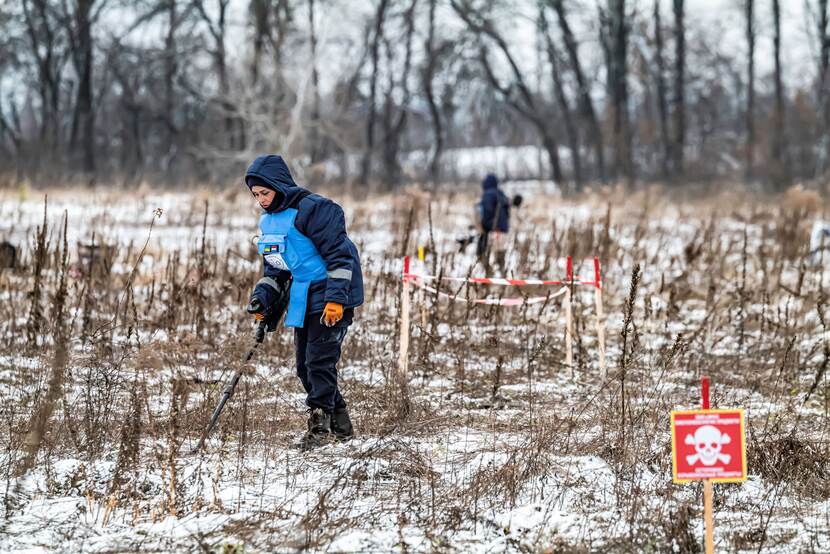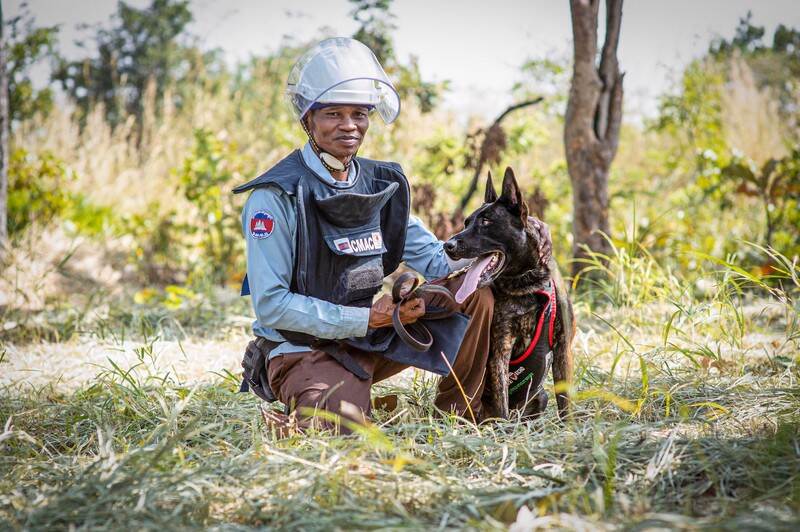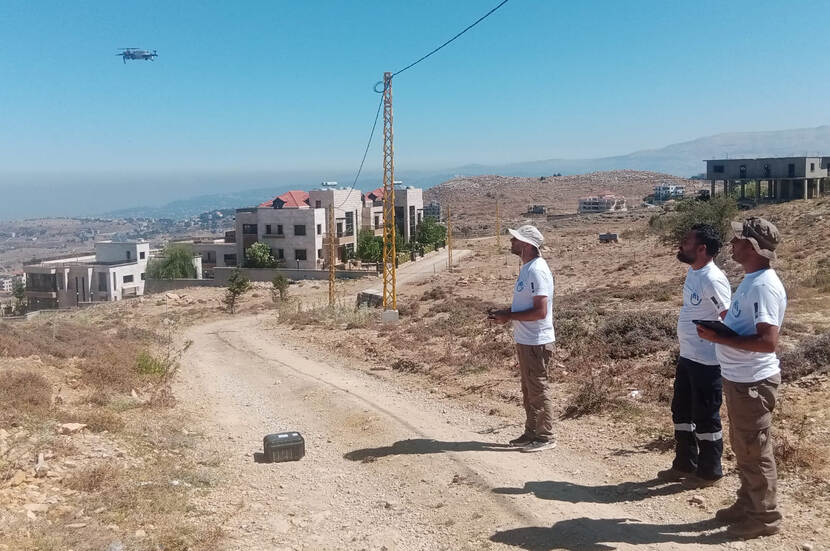‘Landmines are potential unseen killers’
Every year landmines claim thousands of victims worldwide, sometimes long after a conflict has ended. On the International Day for Mine Awareness and Assistance in Mine Action, 4 April, we spoke with Renske Hollants, Policy Officer for Humanitarian Mine Action. ‘The figures are shocking: landmines kill or injure 10 to 15 people around the world every day, more than half of them children.’
Today is the International Day for Mine Awareness and Assistance in Mine Action. Why is this day so important?
Enlarge image
‘Today, people all around the world are focusing on the ongoing problem of landmines. Currently, around 65 countries are having to deal with landmine issues, and this number is not going down. What’s more, because of the war in Ukraine and the many landmines and bits of unexploded ordnance scattered there, action is especially urgent this year.’
‘Demining cannot wait, because the longer we wait, the more victims that mines will cause worldwide. Landmines are potential unseen killers, and the main victims are ordinary civilians. The figures are shocking: landmines kill or injure 10 to 15 people around the world every day, more than half of them children.’
This week the Netherlands announced that it was donating an extra €10 million to mine clearance efforts in Ukraine. What is the situation like there?
‘Ukraine is now by far the most heavily mined country in the world, and most of those mines haven’t yet exploded. There are many explosives in agricultural fields, and the closer you get to the front line, the more dense their spread. Last winter, clearing was virtually impossible because the mines couldn’t be seen under the snow. Now that spring has come, clearing can start again.’
Find out how the HALO Trust is mapping out minefields in Ukraine.
In Afghanistan, too, the situated has changed over the past year
‘In late December the Taliban announced that women were no longer allowed to work for NGOs and international organisations in Afghanistan. This also affects mine clearance organisations, as it prevents them from employing female staff in large parts of the country. Women are still allowed to work in some provinces, and they are currently sporadically still able to provide education on the dangers and risks of landmines to women and girls. But this work is largely at a standstill, and the outlook is not good.’
Enlarge image

Why exactly is it so important for mine clearance to continue?
‘It’s hard to imagine not being able to go safely to the market, work or even home because of the danger of mines and explosives. People feel unsafe in their own surroundings, and this also has a major psychosocial impact. So mine clearance is an important prerequisite for rebuilding a society after a conflict or war, ensuring that people can safely return home and use their fields for farming again and that children can safely return to school.’
What is the Netherlands doing when it comes to mine clearance?
‘The Netherlands is the world’s sixth- or seventh-largest donor to mine clearance. Every year we spend around EUR 15 million on demining. And like last year, we’ve now pledged an additional €10 million euros for efforts in Ukraine. We support projects run by specialised local NGOs and international organisations, including the HALO Trust, MAG, HI and DRC. The Netherlands funds programmes in countries like Iraq, Afghanistan, Lebanon, Libya, South Sudan, Somalia, Laos and Ukraine.’
‘We support not only programmes that focus on clearing explosive remnants of war, but also those working to assist victims, for instance by providing prosthetics and psychosocial support (MHPSS). Mine risk education is also a big part of our commitment. It’s important that people are aware of the presence of mines and know how to recognise them.’
Find out more about the work of the organisations supported by the Ministry of Foreign Affairs.
The Netherlands also supports innovation in the demining sector so that mines can be cleared faster in the future. Do you have any examples of this kind of innovation?
‘A good example is the drone experiments carried out in Lebanon by the international aid organisation HI (Humanity & Inclusion) with support from the Netherlands. The drones are equipped with an infrared camera that can successfully detect mines. This technology is now also being used in Ukraine. HI shares the information collected by the drones with other mine clearance organisations and the Ukrainian government to speed up the demining process.’
‘Another example is a new HI operation that involves using dogs to detect landmines in Senegal. The dogs are trained to smell mines and walk in straight lines across a patch of land. The GPS data they generate is used to create a digital map showing where the mines might be located. The dogs can cover 1,500m² of land a day. By comparison, a human being with a metal detector can examine about 40m² a day. So using dogs offers huge benefits!’


Originally published at https://www.government.nl/latest/news/2023/04/13/landmines-are-potential-unseen-killers



